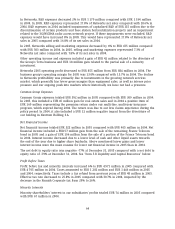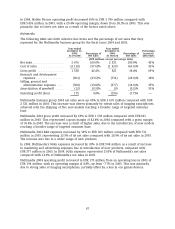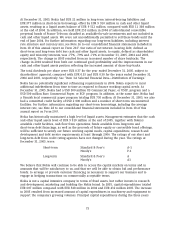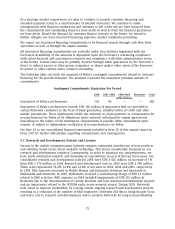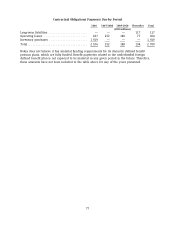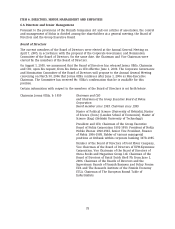Nokia 2005 Annual Report Download - page 73
Download and view the complete annual report
Please find page 73 of the 2005 Nokia annual report below. You can navigate through the pages in the report by either clicking on the pages listed below, or by using the keyword search tool below to find specific information within the annual report.no significant outstanding indebtedness owed to Nokia by any director, executive officer or 5%
shareholder.
There are no material transactions with enterprises controlling, controlled by or under common
control with Nokia or associates of Nokia.
See Note 34 to our consolidated financial statements included in Item 18 of this annual report on
Form 20-F.
Exchange Rates
Nokia’s business and results of operations are from time to time affected by changes in exchange
rates, particularly between the euro and other currencies such as the US dollar, the Japanese yen
and the UK pound sterling. See ‘‘Item 3.A Selected Financial Data—Exchange Rate Data.’’ Foreign
currency denominated assets and liabilities, together with highly probable purchase and sale
commitments, give rise to foreign exchange exposure. In general, depreciation of another currency
relative to the euro has an adverse effect on Nokia’s sales and operating profit, while appreciation
of another currency has a positive effect, with the exception of Japanese yen, being the only
significant foreign currency in which Nokia has more purchases than sales.
During 2005, 2004 and 2003, both the US dollar as well as the Japanese yen depreciated (average
rate used to record transactions in foreign currency for accounting purposes for the year
compared with corresponding rate for the previous year) against the euro. The US dollar
depreciated approximately 1.7%, 10.7% and 19.1%, respectively, and the Japanese yen
approximately 1.6%, 3.0% and 11.2%, respectively. The change in value of the US dollar had a
slight negative impact in 2005 and a material negative impact in both 2004 and 2003 on Nokia’s
net sales expressed in euros. The impact was slightly negative on Nokia’s operating profit in all
years due to the offsetting impact of production and local component sourcing. The change in
value of the Japanese yen had a slightly positive impact on Nokia’s operating profit in each year.
During 2005 and 2003, the UK pound sterling depreciated by approximately 0.5% and 9.9% against
the euro, respectively. In 2004, the UK pound sterling appreciated approximately 1.2% against the
euro. The change in value of the UK pound sterling had a slightly negative impact on Nokia’s net
sales expressed in euros as well as operating profit in 2005 and 2003, and slightly positive effect
in 2004. To mitigate the impact of changes in exchange rates on net sales, average product cost as
well as operating profit, Nokia hedges all material transaction exposures on a gross basis.
Nokia’s balance sheet is also affected by the translation into euro for financial reporting purposes
of the shareholders’ equity of our foreign subsidiaries that are denominated in currencies other
than the euro. In general, this translation increases our shareholders’ equity when the euro
depreciates, and affects shareholders’ equity adversely when the euro appreciates against the
relevant other currencies (year-end rate to previous year-end rate).
For a discussion on the instruments used by Nokia in connection with the hedging activities, see
Note 38 to our consolidated financial statements included in Item 18 of this annual report on
Form 20-F. See also ‘‘Item 11. Quantitative and Qualitative Disclosures About Market Risk’’ and
‘‘Item 3.D Risk Factors—Our sales, costs and results are affected by exchange rate fluctuations,
particularly between the euro, which is our reporting currency, and the US dollar, the Chinese
yuan, the UK pound sterling and the Japanese yen, as well as certain other currencies.’’
Principal Differences Between IFRS and US GAAP
Nokia’s consolidated financial statements are prepared in accordance with IFRS.
Our net profit in 2005 under IFRS was EUR 3 616 million compared with EUR 3 192 million in 2004
and EUR 3 543 million in 2003. Under US GAAP, Nokia would have reported net income of
71





